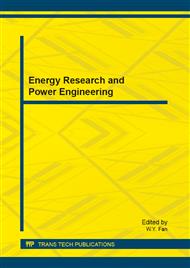[1]
J. Rauschenberg, 7T & Human Safty the Path to the Clinic Adoption, Proc. Intl. Soc. Magn. Reson. 19(2011).
Google Scholar
[2]
C. Polk and E. Postow, Eds., Handbook of Biological Effects of Electromagnetic Fields, 2nd ed., CRC, New York, (1996).
Google Scholar
[3]
C.M. Collins, S. Li, M.B. Smith, SAR and B1 field distributions in a heterogeneous human head model within a birdcage coil, Magn. Reson. Med. 40 (1998) 847-856.
DOI: 10.1002/mrm.1910400610
Google Scholar
[4]
T.S. Ibrahim, R. Lee, B.A. Baertlein, Y. Yu and P.M.L. Robitaille, Computational analysis of the high pass birdcage resonator: finite difference time domain solutions for high-field MRI, Magn. Reson. Imag., 18 (2000) 835-856.
DOI: 10.1016/s0730-725x(00)00161-2
Google Scholar
[5]
F. Liu, H.W. Zhao and S. Crozier, On the Induced Electric Field Gradients in the Human Body for Magnetic Stimulation by Gradient Coils in MRI IEEE Transactions on Biomedical Engineering, 50 (2003) 804-815.
DOI: 10.1109/tbme.2003.813538
Google Scholar
[6]
H.S. Lopez, M. Poole, S. Crozier, An improved equivalent magnetization current method applied to the design of local breast gradient coils, Journal of Magnetic Resonance, 199 (2009) 48-55.
DOI: 10.1016/j.jmr.2009.03.011
Google Scholar
[7]
Information on http: /niremf. ifac. cnr. it/tissprop/htmlclie/htmlclie. htm#atsftag.
Google Scholar
[8]
D. K. Cheng, Field and wave Electromagnetics, 2nd ed. Reading, MA: Addison-Wesley, (1989).
Google Scholar
[9]
A. Trakic, Numerical Modelling of the Electromagnetic Field - Material Interactions in Magnetic Resonance Imaging, The University of Queensland, vol. The School of Information Technology and Electrical Engineering, (2007).
Google Scholar
[10]
Y. Li, J. W. Hand, T. Wills, and J. V. Hajnal, Numerically-simulated induced electric field and current density within a human model located close to a gradient coil, Journal of Magnetic Resonance Imaging, 26 (2007) 1286-1295.
DOI: 10.1002/jmri.21137
Google Scholar
[11]
International Electrotechnical Commission IEC 60601-2-33 Particular requirements for basic safety and essential performance of magnetic resonance equipment for medical diagnosis, 2nd ed.; International Electrotechnical Commission: Geneva, Switzerland, (2002).
DOI: 10.1016/b978-1-4832-8369-2.50192-5
Google Scholar
[12]
W. Xi, M. A. Stuchly, and O. P. Gandhi, Induced electric currents in models of man and rodents from 60 Hz magnetic fields, IEEE Trans. Biomed. Eng., 41 (1994) 1018–1023.
DOI: 10.1109/10.335839
Google Scholar
[13]
M. A. Abdeen and M. A. Stuchly, Modeling of magnetic fields stimulation of bent neurons, IEEE Trans. Biomed. Eng., 41 (1993) 1092–1095.
DOI: 10.1109/10.335848
Google Scholar
[14]
V. Hartwig, Biological effects and safety in magnetic resonance imaging: a review, Int J Environ Res Public Health, 6 (2009) 1778-1798.
Google Scholar


